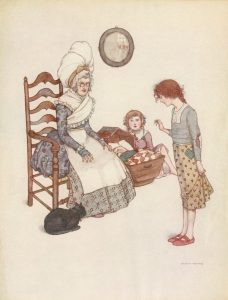It’s always interesting to me, and a little irritating, that everyone talks about stories and storytelling in business and pretty much everything else. It’s the new buzz word for people in the know.
Now Wharton presents a plain-as-the-nose-on-your-face revelation– but, on the other hand, if you don’t know it, you’re going to be lost: https://knowledge.wharton.upenn.edu/article/company-vision-cant-e
I’ll give you the punch line: It takes more than a great vision for success.
So what does story have to do with it? Pretty much everything as long as you remember all of the story elements and how they work together. It’s not just about the dress, Cinderella.
The secret is to take action and construct a realistic plot line with actionable steps that will lead you to the threshold of your dream destination. In other words, while the destination is important, you’re going to need a map to get there. Nobody gets to skip to the last page and have it all. You’ve got to work through the perils and pitfalls, and persevere through mind-numbing tasks, and bullies, too, to get a pass to the next level. (A little game theory comes in handy.)
As Lewis Carroll rightly pointed out through his boisterous queen, (and I’m inclined to allude to this more often than not) “What good is a memory that only works backwards?” Substitute “story” for “memory” and you’ll know what I mean.
Yes, yes, yes, reflecting on the stories of our past and how we got to where we are is all well and good and can guide us away from making the same mistakes twice, thrice, and so on, but dwelling on those mistakes and all the trauma can also work like a sand trap, quicksand. Plot ahead and use your experience as a guide and motivator, not a burden to pull you back and keep you in limbo.
Plan out your story-yet-to-come.
In the end, it’s all about creating a Gannt chart or story board for yourself. Draw out a map, and prepare for the obstacles along the way as you travel over the river and through those great, big trees to the gingerbread house. And don’t be too bowled over if you happen to find the bridge is out. Be creative and build a raft, or find out how others have boldly gone before you. Do what it takes.
It’s your story. Make a good one. Let it be exciting.
Find out more. Contact me.


